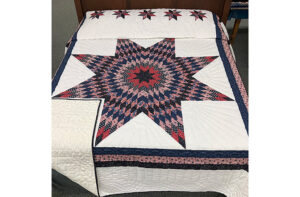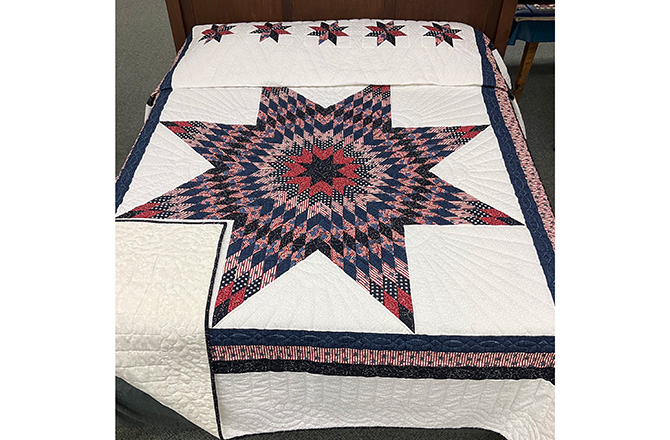Quilting has a rich history in Lancaster County, particularly within Amish and Mennonite communities. Its origins in America date back to early settlers, when resourcefulness was essential. Due to limited access to materials, women repurposed fabric remnants from clothing and domestic items to make quilts, primarily for warmth during cold winters. These early quilts were functional, crafted out of necessity rather than decoration.
The Textile Industry Grows, mid-1800s
By the mid-1800s, the textile industry’s growth fueled a surge in quilting popularity. Amish women, influenced by Quaker neighbors, gained access to a variety of fabrics, transforming quilting into a social activity. Gatherings, known as “quilting bees,” attracted both women and men who would collectively engage in the intricate process of hand-quilting. Quilts produced through a quilting bee was often a treasured family heirloom. Classic Amish quilt styles from this period are characterized by solid colors and geometric patterns, often using solid fabrics without applique.
Quilting Today
Throughout the course of history, quilting has experienced popularity, particularly among women who have embraced it as a means of unleashing their artistic prowess. This phenomenon has been particularly evident within the Amish and Mennonite communities, where the art of quilting has flourished. Due to the inherent functionality of quilts, this craft is often regarded as a practical form of artistic expression, akin to other creative endeavors such as woodworking. Conversely, in Amish communities, pursuits such as painting are deemed frivolous and unproductive, lacking the practicality that is highly valued in their way of life.
Lancaster County
The sustainability of Lancaster County’s quilting industry relies heavily on passionate artisans dedicated to this craft. Hand-quilted Amish and Mennonite quilts have garnered immense admiration as top-notch heirlooms among individuals worldwide. The hours of painstaking effort invested in crafting these quilts are truly recognized and valued. Comparable to their exquisitely crafted furniture and other handcrafted goods, the quilts are designed with longevity in mind, ensuring their endurance for generations to come.
The process of making these quilts is labor-intensive, involving numerous hours of meticulously selecting materials, cutting fabrics, sewing the top pieces together, basting the layers, hand quilting the entire piece, and finally adding the binding. The artists’ exceptional skills are a testament to their unwavering devotion and passion for the craft.
To see some of these amazing hand-stitch quilts in person, visit The Quilt Shop at Miller’s in Lancaster County, which specializes hand-stitched quilts lovingly crafted by local Amish and Mennonite artisans. Can’t make it in? Shop online or schedule a virtual personal shopping appointment.
Video: https://youtu.be/fxv-Z3WIYKg

Photo Details: This hand-stitched King quilt is a traditional Lone Star (also known as the Star of Bethlehem) pattern in various patriotic prints set in a white background with red, white, and blue sashing. Five smaller stars are added near the top border as a decoration that lays across the pillows. The backing features a white floral print. This was handstitched by a Lancaster County artisan. Available at The Quilt Shop at Miller’s.

